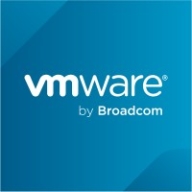

Red Hat OpenShift and VMware Tanzu compete in the container platform market. OpenShift has a slight edge due to its robust security features and strong integration capabilities.
Features: OpenShift Container Platform provides robust auto-scalability, advanced cluster management, and intricate user access controls, making it secure and developer-friendly. It offers ease of integration with existing systems and supports flexible resource scaling. VMware Tanzu is notable for its seamless integration with VMware's infrastructure, including vSphere, and efficient management of Kubernetes clusters across multi-cloud environments. Users appreciate its comprehensive suite for container management.
Room for Improvement: OpenShift needs better integration, improved routing capabilities, and more effective networking functions like IP whitelisting. Simplifying installation and reducing pricing may boost user adoption. VMware Tanzu should enhance integration with non-VMware products and improve networking controls. Its pricing structure could benefit from more granular control and improved disaster recovery options.
Ease of Deployment and Customer Service: OpenShift supports multi-cloud deployments, offering substantial flexibility with well-regarded customer service, though responsiveness can vary. VMware Tanzu excels in integration with VMware ecosystems, providing ease of deployment in hybrid and public clouds. Yet, customer support can be inconsistent and sometimes lacking in-depth knowledge.
Pricing and ROI: OpenShift is recognized for its high cost, justified by its extensive feature set and enterprise support, offering significant ROI through infrastructure cost reduction and improved scalability. VMware Tanzu is seen as more affordable compared to some competitors, yet initial costs remain high. Its value lies in integration capabilities, though some users critique complexity in licensing compared to other solutions.
| Product | Market Share (%) |
|---|---|
| Red Hat OpenShift Container Platform | 19.5% |
| VMware Tanzu Platform | 11.8% |
| Other | 68.7% |


| Company Size | Count |
|---|---|
| Small Business | 14 |
| Midsize Enterprise | 4 |
| Large Enterprise | 39 |
| Company Size | Count |
|---|---|
| Small Business | 10 |
| Midsize Enterprise | 3 |
| Large Enterprise | 10 |
Red Hat® OpenShift® offers a consistent hybrid cloud foundation for building and scaling containerized applications. Benefit from streamlined platform installation and upgrades from one of the enterprise Kubernetes leaders.
VMware Tanzu Platform is designed for cloud-native development and management of Kubernetes, CI/CD processes, microservices, and containerized workloads. It supports deployments both on cloud and on-premises, providing centralized management via Mission Control.
VMware Tanzu Platform offers seamless integration with vSphere, ESX, and vSAN, supporting centralized cluster management and lifecycle management. The platform provides a GUI for monitoring CI/CD pipelines and network policies, enhancing multi-tenancy and Day 2 operations. Users can easily manage Kubernetes clusters, monitor applications, and integrate with tools such as GitHub, GitLab, Cloud Foundry, and Azure. It ensures compliance and security for service providers, financial institutions, and businesses.
What are the key features of VMware Tanzu Platform?
What benefits and ROI should users look for in VMware Tanzu Platform reviews?
Industries such as financial institutions, service providers, and businesses requiring rigorous compliance and security deploy VMware Tanzu Platform. These entities benefit from centralized management, streamlined DevOps processes, and integrated tools, enhancing their capabilities in cloud-native developments and containerized workloads.
We monitor all Container Management reviews to prevent fraudulent reviews and keep review quality high. We do not post reviews by company employees or direct competitors. We validate each review for authenticity via cross-reference with LinkedIn, and personal follow-up with the reviewer when necessary.